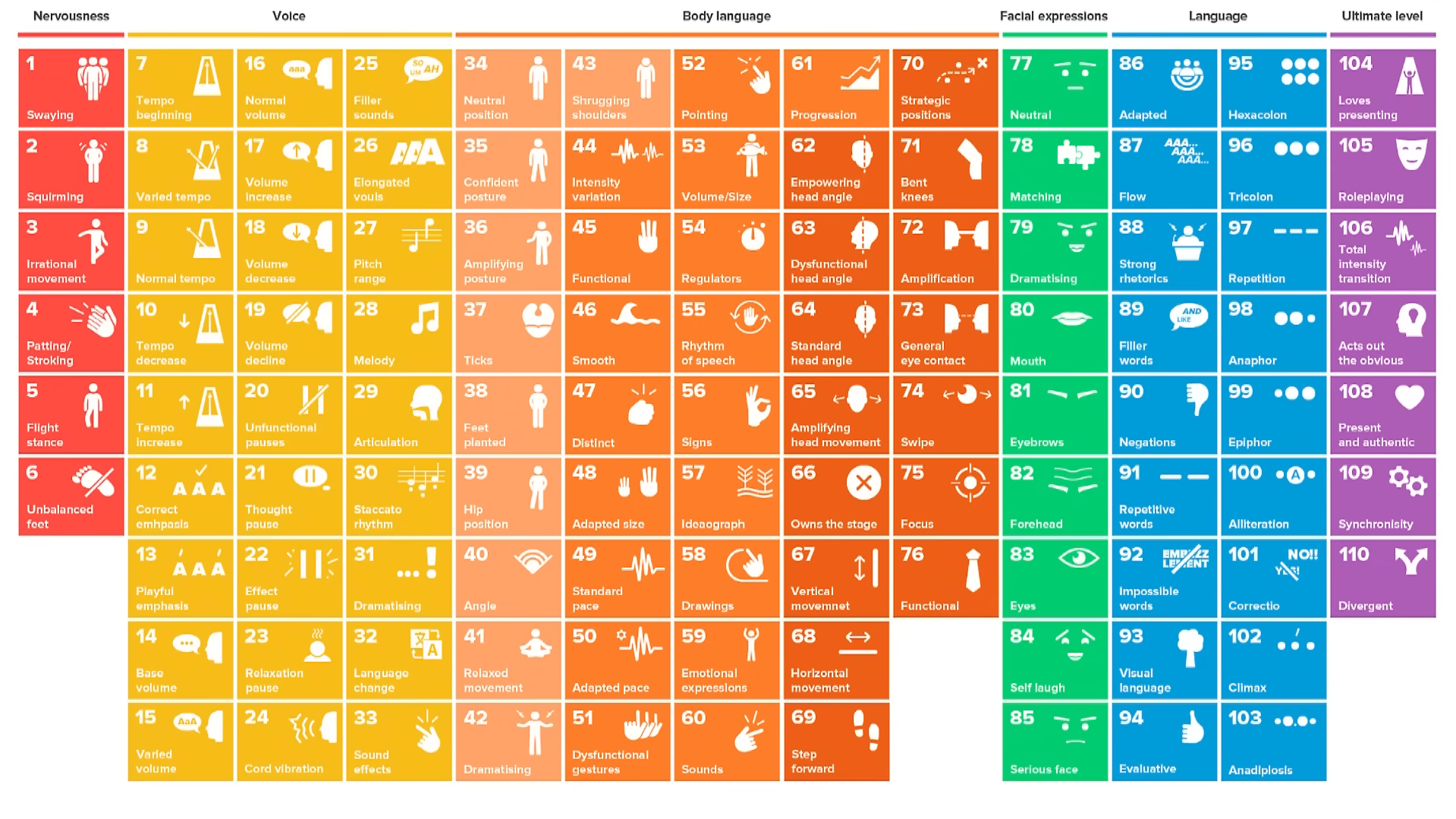Mastering Public Speaking: 110 Techniques
7 min read

Introduction to Public Speaking and Its Importance
Imagine standing before a packed auditorium, all eyes locked on you, waiting for your next word. What you say in that moment could change minds, inspire action, or simply entertain a restless crowd. Public speaking isn’t just some dusty skill reserved for politicians or actors—it’s a superpower anyone can harness. In fact, research shows that people who communicate confidently often climb faster in their careers, build stronger relationships, and influence their communities more effectively. That’s no coincidence.
Take Oprah Winfrey, for example. Her rise wasn’t fueled solely by talent or luck but by her uncanny ability to speak from the heart and connect with millions worldwide. Or think about the difference between a mediocre sales pitch and one that convinces someone to sign on the dotted line. It all boils down to how ideas are delivered. Whether you're leading a team meeting, pitching a startup, or simply making a toast, your ability to speak clearly and persuasively can open doors you never expected.
But here’s the truth: few people are born naturally great at public speaking. It’s a skill refined over time, one that can turn anxiety into confidence and trembling voices into commanding presence. And that’s exactly what this article is about—discovering the tools and techniques to help you not just speak, but communicate with impact. From beginner tips to breakthrough strategies inspired by experts like David JP Phillips, you’re about to embark on a journey that could transform not only how you speak, but how you shape your world.
Essential Public Speaking Tips for Beginners
Getting up in front of a crowd for the first time can feel like standing at the edge of a cliff. The good news? You don’t need to become a TED Talk superstar overnight. Start with these straightforward, battle-tested tips that anyone can apply right now.
1. Know your message inside out
Don’t wing it. Before you speak, get crystal clear on your main point. If you had to summarize your speech in one sentence, what would it be? When you’re confident in your core message, you’ll naturally sound more focused—and that’s way more compelling than trying to dazzle with fluff.
2. Practice out loud—like you mean it
Thinking through your speech silently is great, but it’s a different beast when you say it aloud. Find a mirror, talk to an empty room, or record yourself. Hearing your voice helps catch awkward phrases and unsure moments. Plus, it builds muscle memory—you’ll be less likely to freeze mid-sentence.
3. Start strong with a hook
You’ve got five seconds to grab attention. Open with a surprising fact, a quick story, or a bold question. For example: “Did you know the average person spends six years of their life waiting in line?” That kind of spark makes people stop scrolling in their heads and pay attention.
4. Keep it simple—ditch jargon
Your audience should never have to decode your speech. Avoid fancy words just to sound smart. Use everyday language. Imagine explaining your topic to a curious friend over coffee, not delivering a PhD lecture.
5. Use the power of pauses
Nobody loves a robot-speaker. Pausing before or after a key point lets your audience digest what you said—and gives you a moment to breathe and collect your thoughts. It’s like punctuation in a conversation: utterly necessary and surprisingly impactful.
6. Make eye contact—and not just with the floor
Even if your heart is pounding, look at people. If full eye contact feels like too much, try looking just above their heads or scanning the tops of their shoulders. It creates connection and shows confidence without the spotlight pressure.
7. Move with meaning
Forget pacing nervously. Use purposeful gestures or take a step toward the audience when emphasizing something. A well-timed hand movement can turn a bland point into a memorable moment.
8. Have a backup plan
Technology fails. Microphones die. Slides won’t show. Always prepare to speak without aids. Knowing you can deliver your message even when things go sideways removes a ton of pressure.
Public speaking doesn’t need to be flawless—it just needs to be clear and human. Focus on these practical basics and you’ll already be leaps ahead of most beginners standing frozen at the podium.
How to Overcome Stage Fright and Build Confidence
Let’s get real—stage fright is a beast everyone wrestles with, no matter how polished they look up there. It’s not a flaw or a sign you shouldn’t be speaking; it’s your brain’s very human reaction to being in the spotlight. Your body floods with adrenaline because, deep down, it thinks you’re about to battle a tiger—or worse, mess up in front of a crowd. That raw, jittery energy is actually just your mind gearing up for something important. The trick is learning how to channel it instead of letting it paralyze you.
One surprisingly effective tool is your breath. When anxiety kicks in, your breathing tends to get shallow and quick, which feeds the panic. Try this: slow, deliberate inhales counting to four, hold for four, then a controlled exhale for four. Suddenly, your nervous system gets the memo that you’re not about to be eaten alive. It’s a simple reset button that F-16 pilots and surgeons swear by before high-pressure moments.
Visualization is another secret weapon. Picture yourself owning the stage—not fumbling words or sweating through your shirt but engaging the audience, hearing bursts of laughter or applause. This mental rehearsal primes you to actually do it. Olympic athletes don’t just train their bodies; they envision success repeatedly. Public speaking deserves the same respect.
And hey, nobody pulls off a flawless speech without rehearsal. Knowing your material inside out gives your brain a roadmap less likely to derail under stress. It’s less “wing it” and more “launchpad” for your confidence. The simple act of practicing in front of a mirror, or better yet, friends or family, builds resilience. You get used to the sound of your own voice—the thing that so often trips people up—and learn to smooth out rough spots.
So next time you feel that familiar lurch of fear, don’t shove it aside or pretend it’s not there. Instead, greet it as a sign you’re stepping outside your comfort zone—and that’s exactly where growth happens. Stage fright isn’t your enemy; it’s a signal that you care. Once you harness it, you don’t just speak—you connect, inspire, and maybe even surprise yourself.
The 110 Techniques of Communication and Public Speaking | David JP Phillips
David JP Phillips is practically a legend in the world of public speaking and communication training. Known for breaking down the art of speaking into clear, actionable steps, he’s distilled what feels like the entire universe of presentation skills into “The 110 Techniques of Communication and Public Speaking.” If you want to move beyond vague advice like “just be confident,” Phillips’ framework is like having a detailed map through the often messy terrain of public speaking.
His techniques cover everything—from the basics of voice control to the subtle power of eye contact—and they’re grouped into intuitive categories, making them easier to digest. For starters, under voice modulation, he dives into practices like varying your pitch and pace to keep listeners hooked. Think about Martin Luther King Jr.’s “I have a dream” speech—there’s a rhythmic flow and emphasis that makes every word hit harder. Phillips shows how to cultivate that kind of vocal dynamism deliberately, instead of leaving it to chance.
Then there’s body language, which he treats as a language in itself. Techniques here include purposeful gestures, managing posture, and using movement to punctuate your points. One surprising tip? Using “power poses” before you step on stage to boost your confidence physically—as Amy Cuddy popularized (though with a bit of controversy, it’s still worth experimenting with). Phillips also stresses the often underappreciated value of micro-expressions—those fleeting facial cues that can either build trust or undermine it.
Storytelling is another pillar in his system. Phillips encourages speakers to craft narratives that aren’t just filler but designed to evoke emotion and make ideas unforgettable. He points to examples like Steve Jobs’ product launches, which were less about specs and more about stories that sparked imagination and desire. His techniques get into how to structure these stories to match your message and audience.
 What’s neat about Phillips’ list is that it doesn’t expect you to transform overnight. Instead, he invites you to pick a handful of techniques—maybe practice controlling your breath to calm nerves, or master a simple gesture that feels natural—and build from there. That way, the massive 110 isn’t intimidating but becomes a toolbox you can dip into as you grow.
What’s neat about Phillips’ list is that it doesn’t expect you to transform overnight. Instead, he invites you to pick a handful of techniques—maybe practice controlling your breath to calm nerves, or master a simple gesture that feels natural—and build from there. That way, the massive 110 isn’t intimidating but becomes a toolbox you can dip into as you grow.
If you’re curious to explore further, his talks and courses are readily available online, often sprinkled with memorable anecdotes and quirky science that make the learning both practical and entertaining. You might not memorize all 110, but even a handful of these techniques can turn your next speech from “meh” to memorable.
Conclusion
Public speaking isn’t some mysterious talent locked away for a lucky few—it’s a skill you can build, twist, and shape until it fits your style like a tailored suit. The jitters? Normal. The stumbles? Welcome signs of growth. What matters is showing up, practicing smart, and learning to ride the wave of nerves instead of letting it knock you down.
Take a page from the pros who don’t just talk—they connect, persuade, and inspire through deliberate choices: a measured pause, a well-timed gesture, or a story that sticks. You don’t need to master every trick at once; pick a few techniques, own them, and watch your confidence and impact climb.
Bottom line? The power to influence isn’t about being perfect—it’s about being clear, authentic, and a little fearless. So go on, say your piece. The world’s already waiting.
Suggested Articles

Sleep Music Guide: Boost Quality Rest with Top Apps & Tips

Breaking Doomscrolling: Boost Your Mental Health & Digital Balance

Overcoming Confirmation Bias: Understand the Trap, Break Free, and Think Clearly

Hard Work vs Working Smart: Mastering Consistency, Strategy & Rest for Success

Hofstadter's Law: Why Everything Takes Longer Than Expected

Understanding TAM SAM SOM: A Guide to Market Sizing and Strategy

Best AI Tools for Business Growth and Efficiency in 2025

How to Build and Launch an MVP Fast

Building an Audience as Your New Resume

Mastering the Flywheel Effect in Customer Acquisition

Work Less Achieve More with the 80/20 Rule
Suggested Articles

Sleep Music Guide: Boost Quality Rest with Top Apps & Tips

Breaking Doomscrolling: Boost Your Mental Health & Digital Balance

Overcoming Confirmation Bias: Understand the Trap, Break Free, and Think Clearly

Hard Work vs Working Smart: Mastering Consistency, Strategy & Rest for Success

Hofstadter's Law: Why Everything Takes Longer Than Expected

Understanding TAM SAM SOM: A Guide to Market Sizing and Strategy

Best AI Tools for Business Growth and Efficiency in 2025

How to Build and Launch an MVP Fast

Building an Audience as Your New Resume

Mastering the Flywheel Effect in Customer Acquisition
